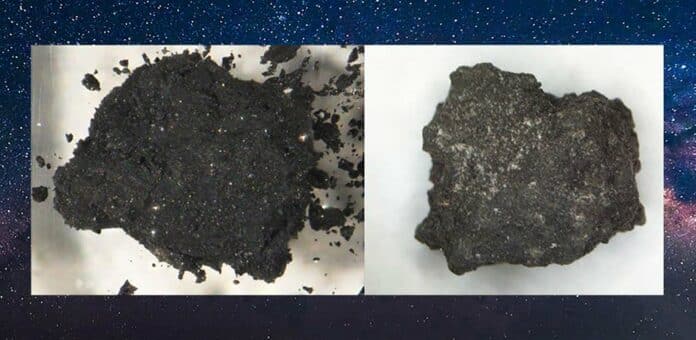Scientists used the Hayabusa2 spacecraft to study the asteroid Ryugu and understand more about hydrous asteroids. When they analyzed samples from Ryugu in the lab, they found they were similar to certain types of carbonaceous chondrites that hadn’t been heated. But, when they looked at how light is reflected from Ryugu and compared it to these carbonaceous chondrites, they didn’t match up.
A group of scientists conducted a study on Ryugu samples. They found that the light patterns from Ryugu samples are similar to when you heat a meteorite called Orgueil CI chondrite at 300°C in specific conditions. This heating process removes water from things that form on Earth and changes the iron in certain minerals.
Scientists studied the samples the Hayabusa2 spacecraft brought back to Earth in 2020. The Japan Aerospace Exploration Agency (JAXA) led this mission to understand more about Ryugu and figure out how scientists can use what they know about meteorites to understand other asteroids in space.
The special thing about the Ryugu samples is that they didn’t go through changes on Earth like other meteorites. Typically, when meteorites come to Earth, they interact with the air and water, which changes them. But the Ryugu samples didn’t go through this on Earth.
The scientists used reflectance spectroscopy, which helps connect lab studies of meteorites to observations of asteroids in space. They made sure to analyze the Ryugu samples without letting them touch Earth’s air so they could keep them in their original condition.
Before this study, scientists thought the minerals in Ryugu’s samples were similar to those in CI chondrites, which are very primitive and basic meteorites. However, some other studies disagreed because they found that the light patterns from Ryugu’s samples were quite different from those of CI chondrites. Now, in this new study, scientists tried heating CI samples in specific conditions, and they found that it made the minerals in these samples look a lot like the ones in Ryugu’s samples when seen through specific instruments.
These results cast doubt on earlier theories on the parent bodies of CI chondrites and highlight the vulnerability of early meteorite spectra to weathering on Earth. According to the findings, actual CI chondrite parent bodies probably have flatter and darker reflectance spectra than previously believed.
Kana Amano, a former PhD student at the early Solar System Evolution Research Group at Tohoku University and co-author of the paper, said, “This study opens new avenues for understanding the composition and evolution of small bodies in our solar system. By considering the impact of terrestrial weathering on meteorites, we can refine our interpretations of asteroid compositions and advance our knowledge of the solar system’s early history.”
Journal Reference:
- K. Amano et al. Reassigning CI chondrite parent bodies based on reflectance spectroscopy of samples from carbonaceous asteroid Ryugu and meteorites. Science Advances. DOI: 10.1126/sciadv.adi3789
